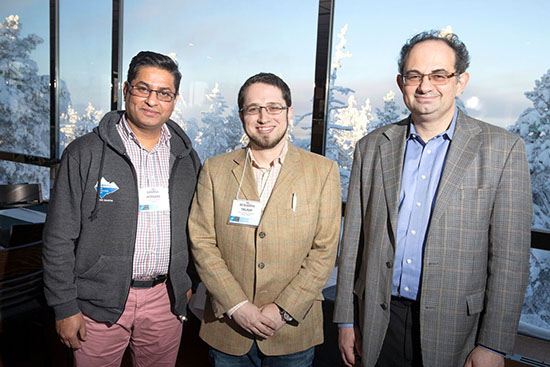Top scholars are seeking solutions for protecting critical digital infrastructure in the Arctic against cyber threats.
If cybersecurity threats materialise in the Arctic, their impact can be even more harmful than elsewhere, because of the harsh environmental conditions and remoteness. The Arctic regions host many data hubs, and significant energy resources depend on reliable computer control. Weather conditions and potential natural disasters require new methodologies of risk and resilience assessment, and effective legal and governance frameworks to protect critical infrastructures and to sustain both civilian and military activities.
In the workshop Governance for Cyber Security and Resilience in the Arctic taking place in Rovaniemi, researchers and security experts get to discuss strategies and offer perspectives on how to improve critical digital infrastructure against threats, both natural and human. The workshop is funded by the Emerging Security Challenges Division of the North Atlantic Treaty Organization (NATO), within the framework of its Science for Peace and Security Programme. The Arctic Centre at the University of Lapland is organising the workshop together with the US Army Corps of Engineers.
It is not possible to eliminate all threats, so resilience is of great significance.
The workshop participants – some 40 researchers, government officials as well as military and civilian cybersecurity specialists – got an authentic experience of Arctic resilience as temperatures on the Ounasvaara fell dropped below -25°C.
One of the experts in the workshop is Arctic Centre researcher Mirva Salminen. In her work, she is introducing issues of human security to cybersecurity agendas.
“As digitalisation continues to evolve, it changes the way people in the Arctic live. It will bring opportunities, but it may also bring threats. We are more and more dependent on the digital environment. Alongside security threats related to the protection of information and functions vital to the society, our research project is discussing for example, whether traditional knowledge will suffer as people are interacting more with the mainstream culture. as well as the novel forms of economic activity and identity production that digitalisation enables.”
In the workshop, the participants discuss what cyber threats there are in the Arctic region, and what their effects are.
“In our working group, we concentrate on critical infrastructure. We have talked about the security of supply, and about Arctic navigation, for example. As maritime transport becomes more and more automatic and digital, what are the threats to the environment? It is great that people realise that distances, changes in temperature or in the sea ice can have an effect on digital and digitally controlled technologies, whether we talk about ships, harbours, trains or cars”, Mirva Salminen explains.
“Digitalisation in the Arctic is important, and it is especially critical, as the information infrastructure tends to be weaker in the Polar Regions. In Scandinavia, we are better covered than the Arctic regions in Canada or the U.S. for example, as the distances are even longer and population is sparser. These factors affect, for example, the choice of technology for connecting.”
The cybersecurity community and the Arctic research community do not often cross paths.
“Some things that are self-evident for one group may be unknown to the other. In these kinds of meetings we are gaining common ground”, Mirva Salminen rejoices.
“I am also happy to see that experts from many different fields are emphasising the role of humans as part of the cyberphysical system.“
Photos (c) Kaisa Sirén.
Top of page: Mirva Salminen is glad that the Arctic interests cybersecurity experts.

Workshop Co-Directors Dr. Kamrul Hossein and Dr. Benjamin Trump with Workshop Chairman Dr. Igor Linkov enjoying the snowy view.